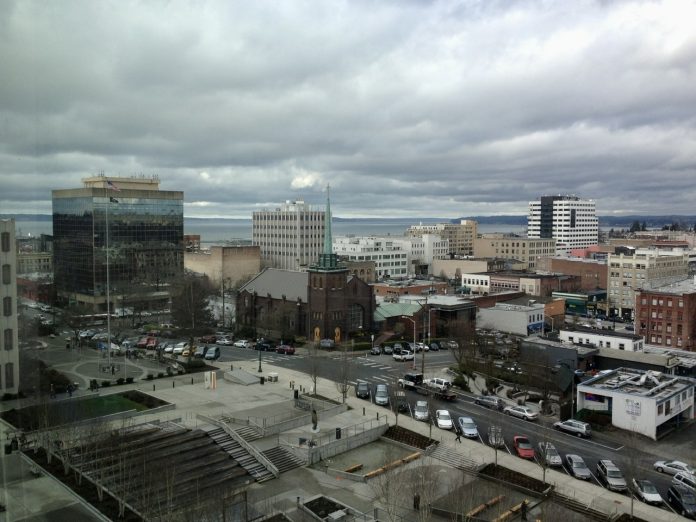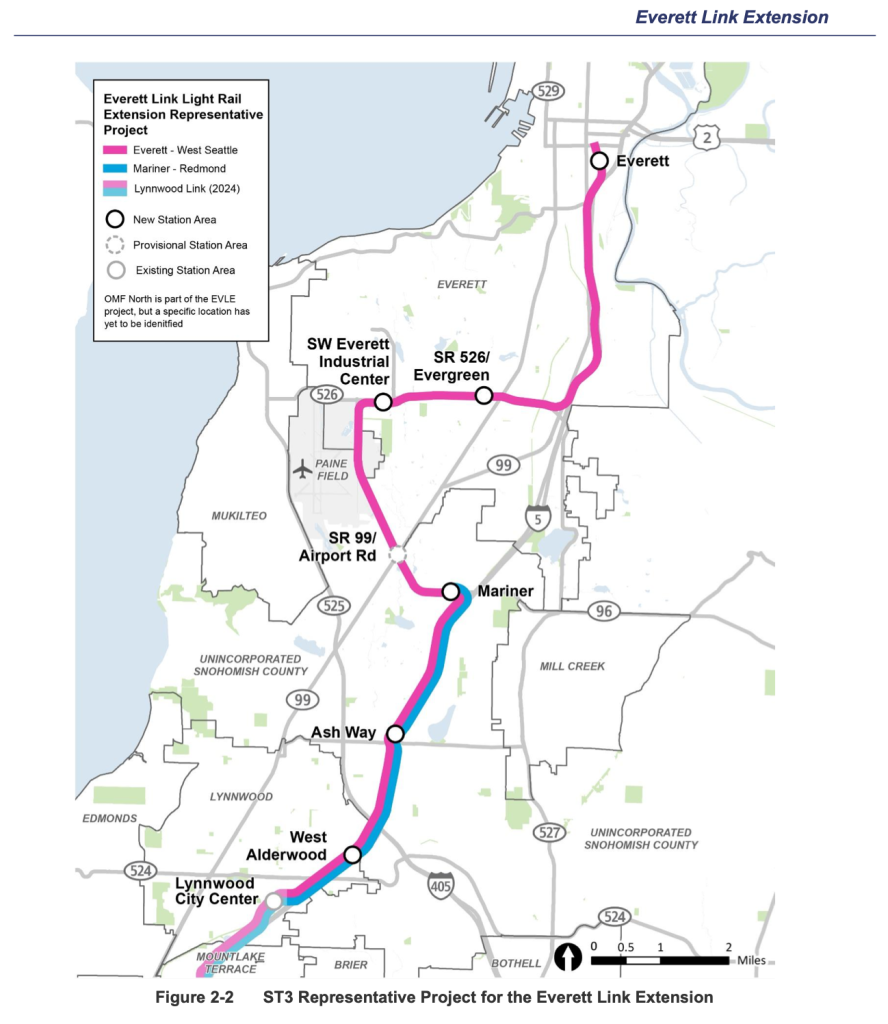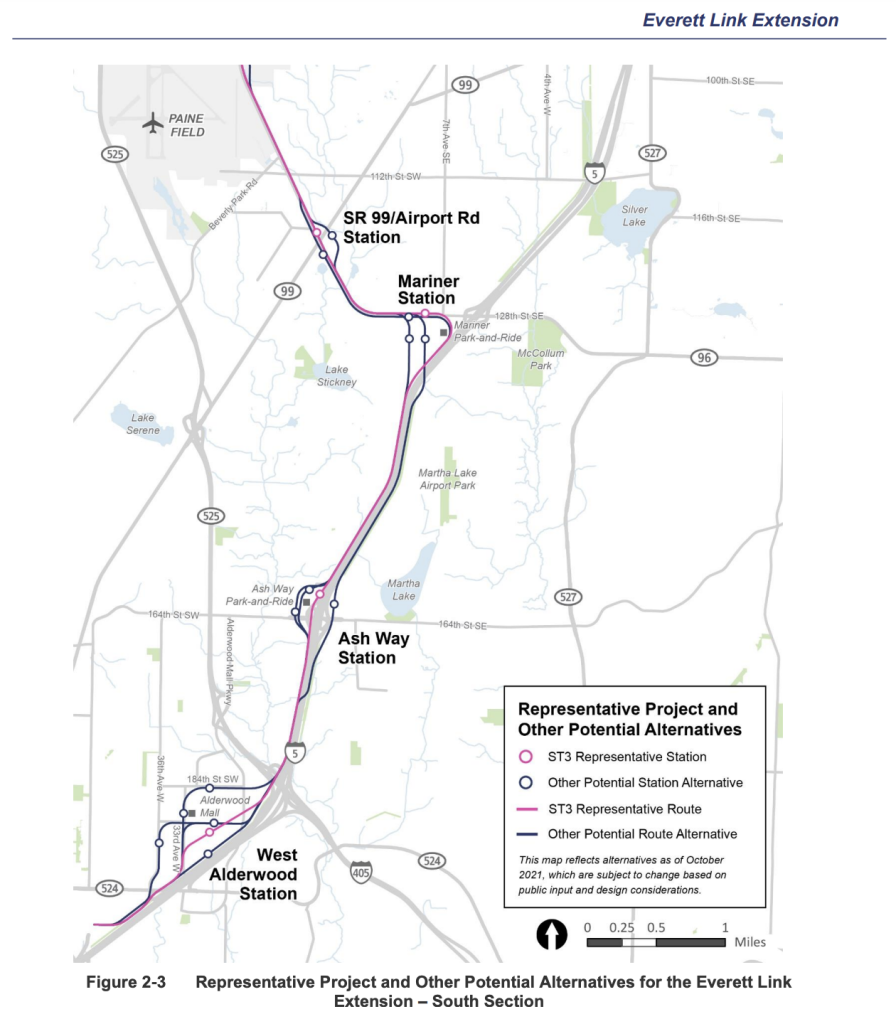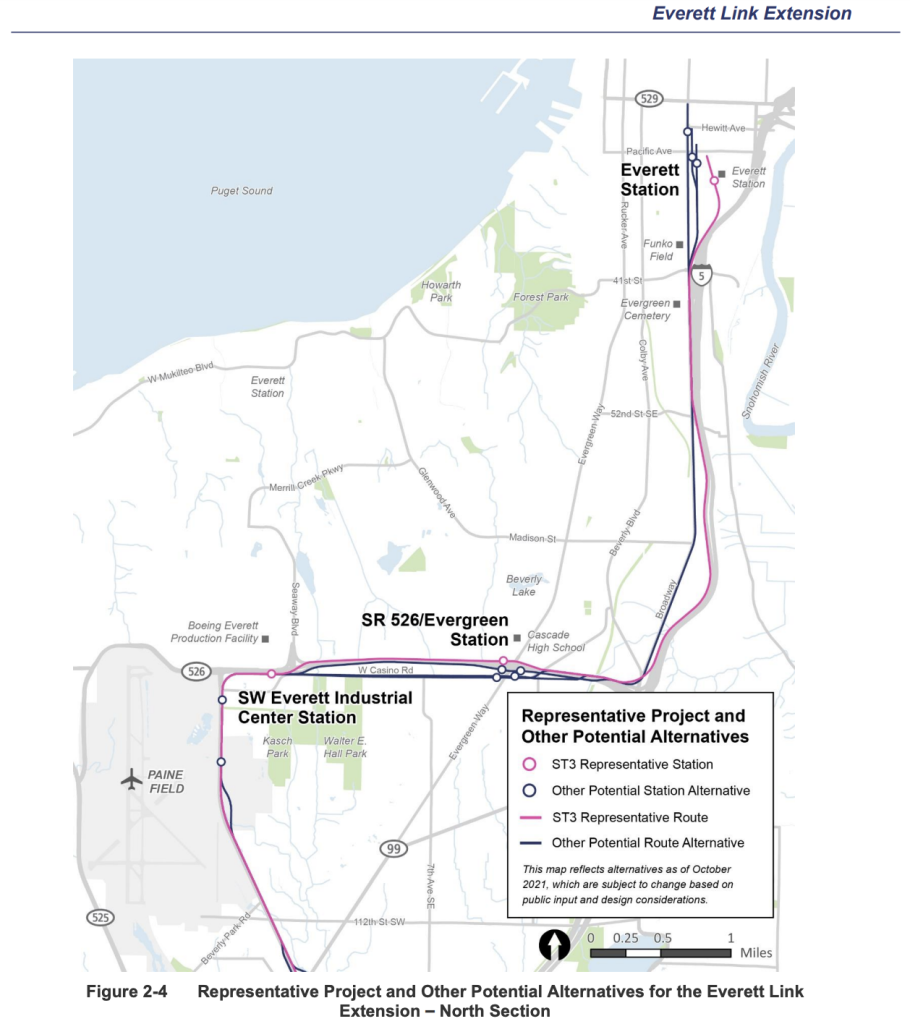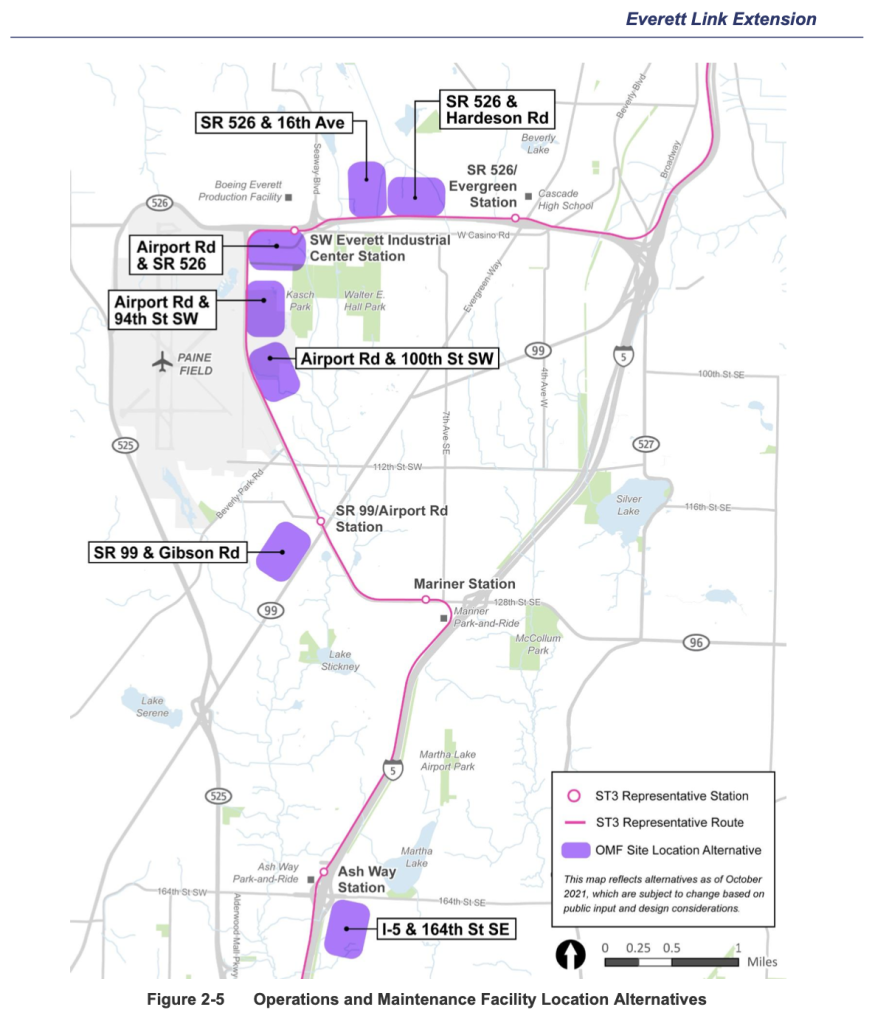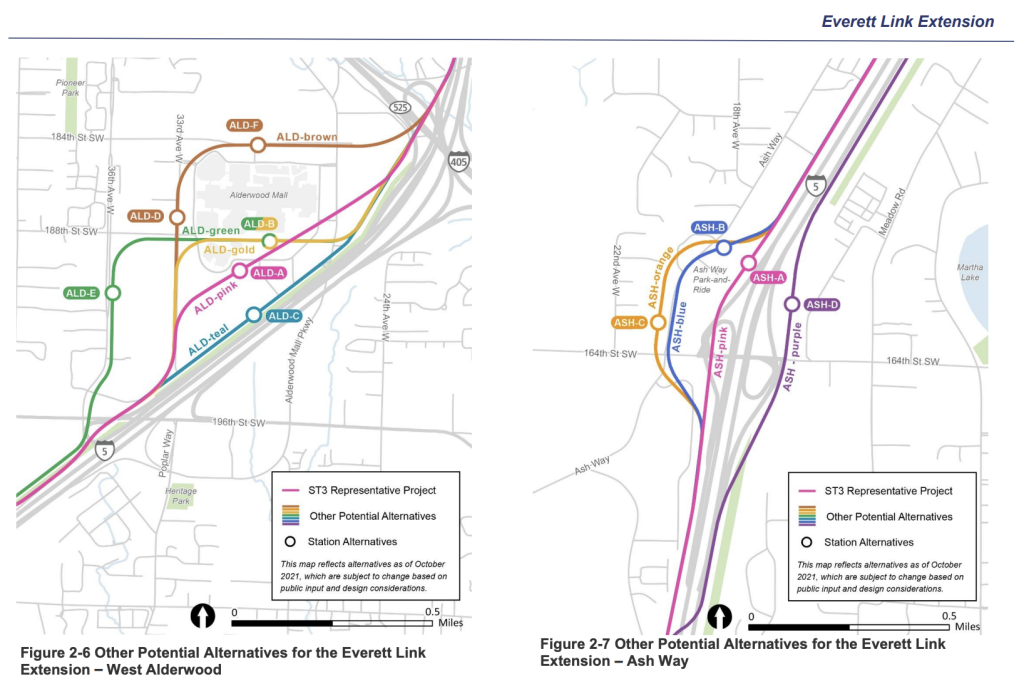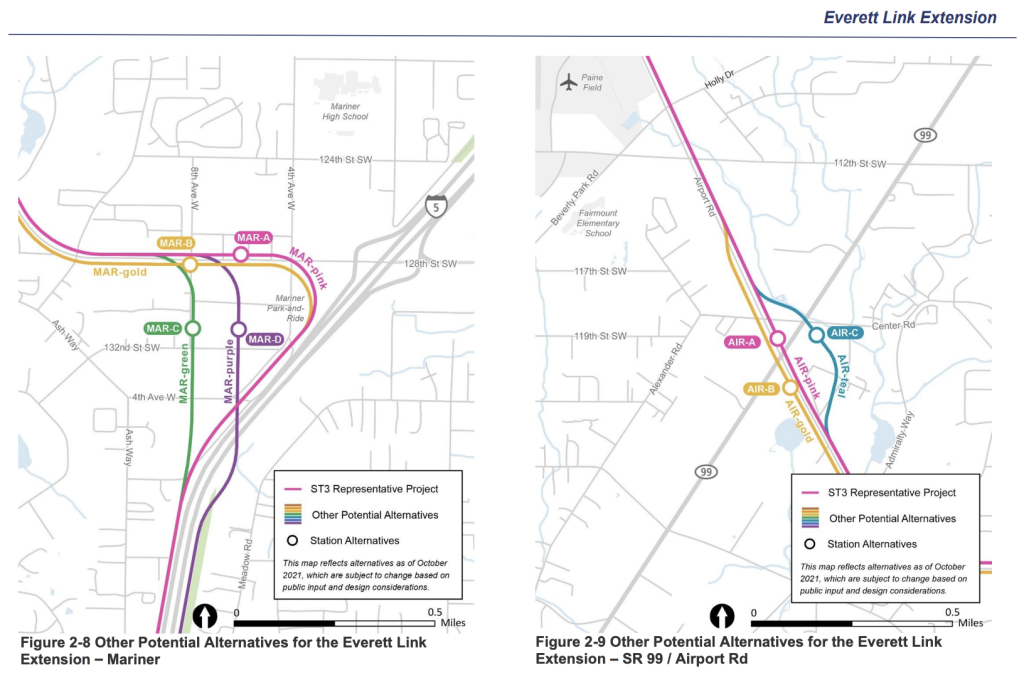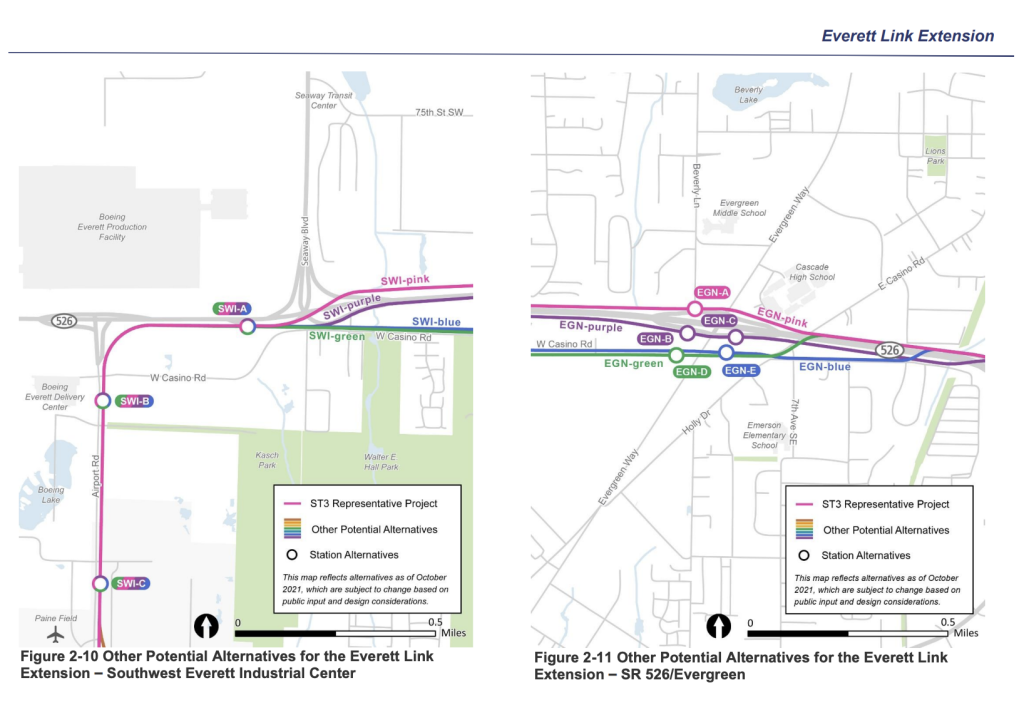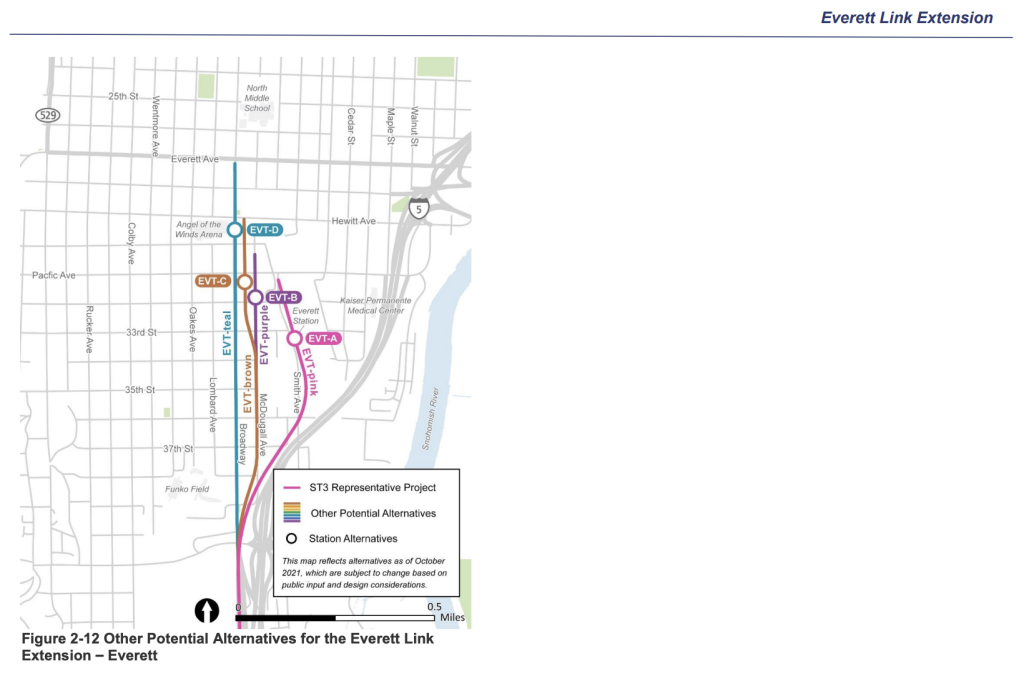A new scoping information report has been released for Sound Transit’s Everett Link extension project. It’s a first crack at detailing potential alignments between Lynnwood and Everett. Feedback gained from the process will be used to refine alternatives to be evaluated as part of the alternatives development process and eventually work toward a single preferred project alternative through the environmental review process.
The early scoping information report shows a variety of potential alternative alignments from the Representative Project — the one prepared as part of the original voter-approved Sound Transit 3 ballot measure — and potential locations for a new operations and maintenance facility to support the light rail extension.
In August, the Sound Transit board of directors adopted a realignment of the Sound Transit 3 program. This reset some project timelines with affordable and target schedules. It also meant delaying when parking project components might be delivered. As part of this process, Everett Link was bifurcated into distinct projects: Lynnwood-Southwest Everett and Southwest Everett-Downtown Everett. When those projects might delivered depends on the schedule:
- Under the affordable schedule, the Lynnwood-Southwest Everett is expected to be delivered in 2037 and Southwest Everett-Downtown Everett is expected to be delivered in 2041 — except for parking project components that are estimated to be delivered in 2046.
- Under the target schedule, both projects are set to be delivered in 2037 — just one year later than originally planned — also except for parking project components.
If extra financial capacity doesn’t materialize, they could be delivered as separate projects. And if so, the location of an operations and maintenance facility will matter greatly. Putting such a facility around Paine Field or further south could become an important goal to ensure that the two projects could indeed be delivered separately.
In terms of the Representative Project alignment, the route would largely hug I-5 and SR-526 and follow along Airport Road/128th Street SW. Small portions of the alignment between Lynnwood Station and West Alderwood Station as well the tail to reach Everett Station would stay slightly from the highways and main road to the airport. The initial slate of alternatives in the scoping information report are focused around station locations, which could bend the route alignments around them.
Snohomish County has been particularly active in trying to influence station locations at Ash Way and Mariner, which is reflected in the alternatives that Sound Transit has put out. At Ash Way, there are three alternatives with two putting the station just west of the current park-and-ride and one that would put a station the east of I-5. The latter would require crossing I-5 twice between West Alderwood Station and Mariner Station, but offer the highest potential walkshed and transit-oriented development, provided that low-density residential areas are rezoned. Three station location alternatives at Mariner Station are also identified, including that is necessarily tied to the Ash Way east-of-I-5 option.
As far other alternatives by segment, they include the following:
- At West Alderwood, the Representative Project would put the station near the heart of the mall while five other options would put it north, west, or south. One option even considers a station next to I-5, but that would hamper the walkshed. Options west and north would be better for transit-oriented development (TOD), especially if residential areas nearby are rezoned.
- At SR-99/Airport Road, the Representative Project would put the station right near the intersection while two alternatives slightly move the location north and east, including one toward Center Road for more TOD potential. This station is considered a provisional infill station.
- At Southwest Everett Industrial Center, the Representative Project would put the station near the Boeing site. Alternatives consider stations slightly southward, including one close to the Paine Field commercial terminal. There’s real tradeoffs here because the best use case of the Boeing stop would be access by local residents in the multifamily area to the west — not Boeing workers who generally don’t take transit and a company that is quite likely to leave with or without light rail — while a station near the airport would increase the likelihood of people taking transit to their flights (a very meager proportion do today, including airport staff).
- At SR-526/Evergreen Way, the Representative Project would put the station on the northwest side of the interchange. There are four alternatives here and essentially any of them would be better for transit-oriented development since it would bring the station closer to where most potential riders already live. In fact, options that put a station on the west side of Evergreen Way would save most people accessing it the effort of crossing a dangerous surface highway.
- In Downtown Everett, the Representative Project would put the station at the current multimodal station. Alternatives would locate a station closer to the heart of Downtown Everett to the north and west, including a stop on Broadway — the most principal north-south street — next to the arena. Again, here there are real tradeoffs, but the winner here may be a stop that splits the difference around Broadway and Pacific Avenue, allowing quick and safe access to the multimodal station, Swift Blue Line, and the heart of Downtown Everett. A future extension could do the job better of reaching the city center and points north. Sound Transit could also just stick with the Representative Project station location and Everett would need to bank on said future extension.
Initial scoping information report misses the boat
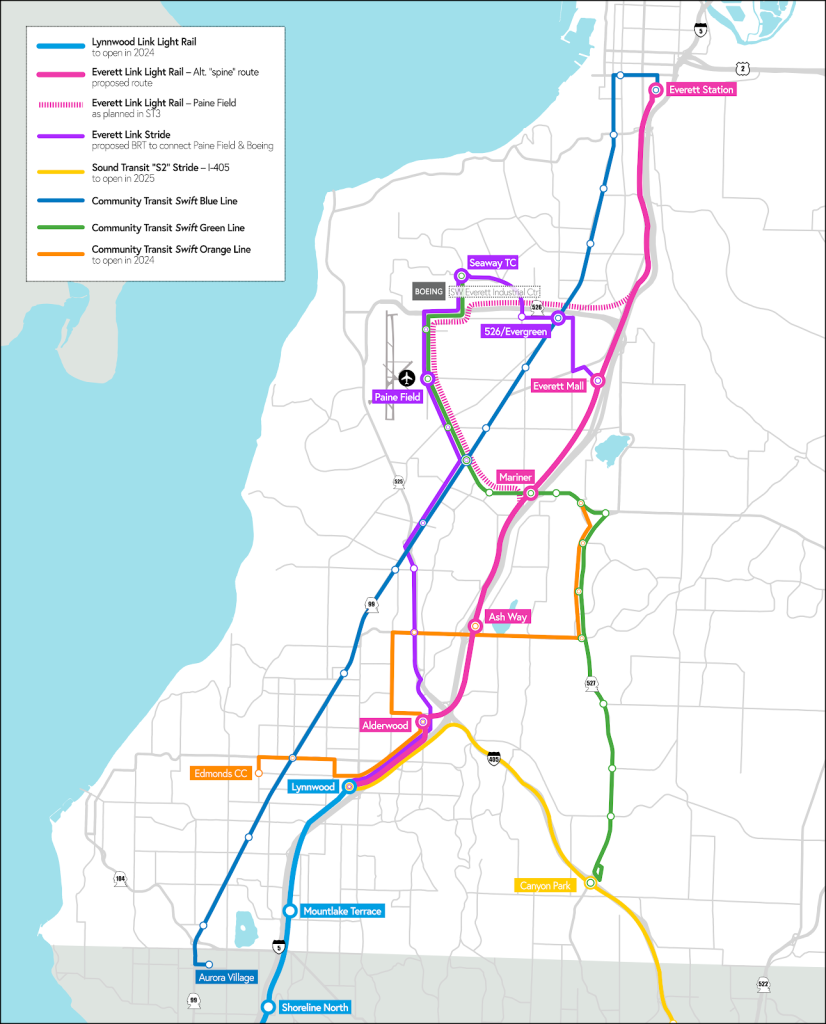
What the initial scoping information report fully misses is an opportunity to improve transit options to South Everett. As detailed earlier this year, Sound Transit could drop the Paine Field light rail deviation in favor of bus rapid transit. This would do a much more comprehensive job at serving South Everett while speeding up trips on light rail from Everett. It could allow for light rail to be delivered sooner because of significant cost savings. Should Paine Field ever warrant light rail (ridership data models tell us it does not now nor well into the future), a spur could be built in a future light rail expansion program.
The concept for a more streamlined Everett Link alignment and local bus rapid transit could certainly be improved with a view toward deeper alternatives analysis. For instance, pushing portions of the alignment toward SR-99 or the Interurban Trail could open up unique opportunities. Considering additional or alternative stations could also maximize the benefit and utility of Everett Link.
Ultimately, the region cannot afford a 100-year mistake and it shouldn’t be satisfying corporate overlords in Chicago while leaving underserved communities behind with the Paine Field deviation; that’s antithetical to good transit planning. The alternatives development and environmental review processes need to consider better transit options that will move people more quickly, give them more choices, and reduce more carbon emissions.
Public involvement opportunities
The early scoping process will provide an opportunity for public comment through December 10th. Comments can be provided through the online open house. Sound Transit will also hold two virtual public meeting this month: one on Wednesday, November 17th from 12:00pm to 1:30pm and another on Thursday, November 18th from 6:00pm to 7:30pm. The virtual meetings will be on Zoom. The online open house provides more details on how to join the meetings.
Stephen is a professional urban planner in Puget Sound with a passion for sustainable, livable, and diverse cities. He is especially interested in how policies, regulations, and programs can promote positive outcomes for communities. With stints in great cities like Bellingham and Cork, Stephen currently lives in Seattle. He primarily covers land use and transportation issues and has been with The Urbanist since 2014.

